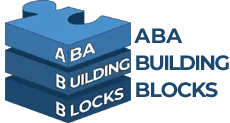Are you feeling overwhelmed or confused about the process of obtaining an ABA therapy training certification? It is an undeniable fact that figuring out the right path towards becoming an ABA therapist can seem like an insurmountable task with numerous prerequisites, lengthy courses, and multitude of options. Not only can the complexities of training programs be difficult to navigate, but also there might be additional obstacles like maintaining your certification or expanding your practice.
As experts in the field, we at ABA Building Blocks understand these challenges fully, and we’re here to help. Our aim is to make this process less confusing and intimidating for you. In the arena of behavior management and therapeutic interventions, ABA – Applied Behavior Analysis – stands out as an evidence-based practice with a strong record of success, particularly in the treatment of autism and other developmental disorders.
With an ever-increasing demand for ABA services, obtaining an ABA therapy training certification could be a brilliant move for your career. Plus, the impact you create in the lives of individuals with behavioral challenges can indeed be very rewarding and fulfilling. Why not ensure you’re fully equipped to render care effectively and confidently?
For those of you looking for a quick overview, here’s what the journey towards becoming ABA certified broadly entails:
- Obtain the necessary educational qualifications – this varies with each level of certification but usually involves obtaining a bachelor’s or a higher degree in behavior analysis or a related field.
- Accumulate supervised practical experience – hands-on experience under the supervision of a Board Certified Behavior Analyst (BCBA) or other qualified professionals is crucial.
- Pass the required examination – after satisfying the above prerequisites, you should pass a comprehensive exam conducted by the Behavior Analyst Certification Board (BACB).
- Maintain your certification – this includes fulfilling continuing education requirements and adhering to a professional and ethical compliance code.

Stay with us through this guide as we delve deeper into each of these steps, helping you precisely understand the journey towards ABA certification. It’s simpler than it initially seems, trust us!
Conclusion: The Value of ABA Therapy Certification and Next Steps
The journey to obtaining ABA therapy training certification is rigorous and demanding, but the investment is well worth the effort. Not only does the certification testify to your skill and dedication, but it also equips you with the tools and knowledge needed to genuinely make a difference in the lives of those with autism and other developmental disorders.
Being a certified ABA therapist offers you the opportunity to work in a variety of settings, including schools and healthcare environments. You’ll be able to help students with learning and developmental disabilities, work with families to apply ABA principles at home, or even become a policymaker or advocate in the education system. In the healthcare world, your expertise will contribute to research departments, caregiver training, and directly intervening in autism cases.
At ABA Building Blocks, we understand the challenges that come with the certification process. That’s why we offer comprehensive support to help you navigate the complexities of ABA training. From the initial assessment and diagnosis to customizing a comprehensive ABA therapy plan, we’re with you every step of the way.
In addition, we provide intensive ABA therapy training that meets the BACB RBT requirements. Our training includes live webcasts, pre-and post-tests for each session, and access to experienced practitioners who can answer your questions about ABA techniques.
As you embark on your ABA therapy certification journey, the ultimate goal is to help individuals with autism lead fulfilling, independent lives. The process may seem daunting, but with the right guidance, support, and determination, you’ll be well on your way to making a significant impact in applied behavior analysis.
So, what are the next steps? Start by reviewing the certification requirements set by the BACB, and consider what level of certification aligns with your career goals. Then, take the plunge and begin your training. At ABA Building Blocks, we’re here to assist and guide you towards your career in ABA therapy.
Whether you’re a practice owner, a behavior therapist, or someone interested in embarking on a rewarding career in ABA therapy, don’t hesitate to reach out to us. With our wealth of experience and dedication to quality ABA training, you’ll be well-equipped to navigate your certification journey. Let’s work together to build a brighter future for individuals with autism and their families.
Understanding the Behavior Analyst Certification Board (BACB)
Before we proceed to the nitty-gritty of ABA therapy training certification, let’s familiarize ourselves with a key player in this field – the Behavior Analyst Certification Board (BACB).
Role of BACB in ABA Therapy Certification
Established in 1998, the BACB is a nonprofit organization that sets the gold standard for ABA therapy certification globally. Its mission is to protect consumers by establishing and maintaining standards for the practice of behavior analysis.
The BACB plays a crucial role in every step of your ABA therapy training certification journey. They develop and implement the certification standards for various levels of ABA practitioners. This includes outlining the necessary training, conducting the competency assessment, and administering the certification exam.
Moreover, the BACB ensures all certified professionals adhere to a specific code of ethics, known as the RBT Ethics Code (2.0). This code outlines the ethical standards that all behavior-analytic practitioners must follow, thereby assuring quality services and maintaining professional integrity in the field.
As part of our commitment at ABA Building Blocks, we align our training curriculum with the BACB’s requirements. This guarantees our trainees are well-prepared for the certification process and equipped to provide exceptional behavior-analytic services.
Levels of Certification Provided by BACB
The BACB provides four primary levels of certification. Starting from the foundational level, we have the Registered Behavior Technician (RBT). This certification is designed for paraprofessionals who implement behavior-analytic services under the close supervision of BCaBA, BCBA, or BCBA-D.
The next level is the Board Certified Assistant Behavior Analyst (BCaBA). BCaBAs are undergraduate-level certified practitioners who can supervise the work of RBTs and implement behavior-analytic services under the supervision of a BCBA.
The third level is the Board Certified Behavior Analyst (BCBA). BCBAs are independent practitioners who can provide behavior-analytic services, supervise the work of BCaBAs and RBTs, and serve as role models in the field.
Finally, we have the Board Certified Behavior Analyst-Doctoral (BCBA-D), the highest level of certification. BCBA-Ds are doctoral-level practitioners who have met all BCBA requirements and have earned a doctoral degree.
As we continue our journey through this guide, we will explain each of these certifications in greater detail, covering the steps involved, the requirements, and the benefits of each level of certification.
Advanced Certification: Board Certified Behavior Analyst-Doctoral (BCBA-D)
If you’ve reached the BCBA level and are looking to further your credentials and expertise, you might consider pursuing the doctoral-level certification – Board Certified Behavior Analyst-Doctoral (BCBA-D).
Additional Requirements for BCBA-D Certification
To become a BCBA-D, you would need to actively maintain your BCBA certification and meet one of the following additional requirements:
- Complete a doctoral degree from a program accredited by the Association for Behavior Analysis International.
- Complete a doctoral degree from a non-accredited program and conduct a behavior analysis-related dissertation. If you choose this path, you must also have either completed four or more courses related to behavior analytics, received formal advising or supervision from a faculty member who meets requirements set by the BACB, or have published at least two peer-reviewed journal articles that are behavior-analytic in nature.
- Complete relevant postdoctoral experience and have published at least two peer-reviewed journal articles that are behavior-analytic in nature.
While the BCBA-D designation acknowledges your doctoral-level education in behavior analysis, it does not grant any additional privileges beyond those of a BCBA.
Maintaining BCBA-D Certification: Recertification Requirements and Ethical Standards
Maintaining your BCBA-D certification mirrors the recertification requirements of a BCBA. This includes completing at least 32 continuing education units within each two-year recertification cycle and adhering to the BCBA code of ethics.
If you are supervising BCaBAs, RBTs, or trainees pursuing certification, you must complete specific ongoing supervisory training and certain continuing education units related to working in a supervisory capacity.
You will typically change your certification from BCBA to BCBA-D at the time of renewal by contacting the BACB. This process includes an additional $75 on top of the renewal fee for BCBA certification.
At ABA Building Blocks, we understand the dedication required to continue advancing your career in behavior analysis. We’re here to support you every step of the way, providing comprehensive training and resources to help you make the most of your ABA therapy training certification.
Next, let’s discuss the specific considerations for licensure as a Behavior Analyst in New York State.
Pathway to Becoming a Registered Behavior Technician (RBT)
Becoming a Registered Behavior Technician (RBT) is the first step in the ABA therapy training certification journey. It’s a paraprofessional role in the field of Applied Behavior Analysis (ABA), which means you’ll be working under the supervision of an RBT supervisor or an RBT requirements coordinator.
Eligibility and Training Requirements for RBT
The first step towards becoming an RBT is to meet the eligibility requirements. You must be at least 18 years old, hold a high school diploma or equivalent, and pass a background check. Once these conditions are met, you’ll need to complete a 40-hour training course that covers key aspects of ABA, such as measurement, assessment, skill acquisition, behavior reduction, documenting and reporting, and professional conduct.
We offer a comprehensive RBT training course here at ABA Building Blocks, designed to equip you with the necessary skills to provide quality behavior-analytic services. The training should be completed within 180 days, but not less than a five-day period, as per BACB’s requirements.
Examination and Certification Process for RBT
After completing the training, the next step is to pass the RBT competency assessment, which measures your ability to apply the knowledge and skills you’ve acquired during the training course. This will directly influence your success in the final exam.
The final hurdle in your journey to becoming an RBT is passing the RBT Exam. This exam tests your understanding and application of the principles you’ve learned during the training and competency assessment. Expect to face multiple-choice questions that you’ll have 90 minutes to complete. The exam fee includes a $50 application processing fee and a $45 exam appointment fee.
Maintaining RBT Certification: Supervision and Renewal Requirements
Once you successfully earn your RBT certification, maintain it by meeting certain requirements. You need to maintain supervision requirements, adhere to the RBT code of ethics, meet self-reporting requirements, and complete an annual RBT renewal application.
By adhering to the RBT Ethics Code (2.0), you ensure that you uphold professional conduct consistent with your role and scope of practice. This includes being mindful and reflective of personal values and practices, and acting with cultural humility, diversity, equity, and inclusion in mind.
Here at ABA Building Blocks, we are committed to supporting you every step of the way in your journey to become an RBT. We believe in nurturing and supporting our trainees, ensuring they have all the resources they need to achieve their RBT certification and maintain it.
Special Considerations for New York State Licensure as a Behavior Analyst
ABA therapy training certification is a critical step towards becoming a licensed behavior analyst. However, it’s important to note that the requirements and pathways for licensure often vary by state. For instance, in New York State, you must be licensed to use the title “licensed behavior analyst”.
Pathways to Licensure in New York State
In New York, there were two primary pathways to licensure for prospective behavior analysts.
Pathway One, also known as the standard licensing provisions, requires applicants to submit an Application for Licensure (Form 1) along with the licensure and registration required fees. It’s crucial to keep in mind that these requirements are outlined in Section 8804 of New York’s Education Law and Subpart 79-17 of the Commissioner’s Regulations.
The specifics of the second pathway weren’t outlined in the research provided, but it’s highly advisable to check the New York State Education Department’s website or contact them directly for more detailed information.
Understanding Limited Permits and Their Requirements
In addition to standard licensure, New York State also offers a limited permit for a licensed behavior analyst. This permit comes with a fee of $70, which is non-refundable. The limited permit fee is separate from the licensure and first registration fee, which is $300.
Limited permits are typically issued to professionals who have met all the licensure requirements except the examination. These permits allow professionals to practice under the supervision of a licensed behavior analyst, providing them with valuable hands-on experience before they take the licensure exam.
As an applicant, it’s crucial to understand that a limited permit isn’t a substitute for licensure. It’s a temporary provision that allows you to gain practical experience under supervision.
At ABA Building Blocks, we understand the intricacies of the licensure process and are here to support you throughout your journey. Our dedicated team can provide guidance on everything from navigating the application process to preparing for the licensure exam. Whether you’re a new graduate or a seasoned professional looking to broaden your scope of practice, we’re committed to helping you succeed on your path to becoming a licensed behavior analyst.
Journey to Becoming a Board Certified Assistant Behavior Analyst (BCaBA)
The next level of ABA therapy training certification after RBT is the Board Certified Assistant Behavior Analyst (BCaBA). As the name suggests, BCaBAs assist BCBAs and are also allowed to supervise RBTs. This certification brings more responsibilities and is a significant step towards becoming a full-fledged BCBA.
Educational and Coursework Requirements for BCaBA
To pursue BCaBA certification, you must have at least a bachelor’s degree from an accredited university. The degree can be in any field, but it should include specific coursework approved by the Behavior Analyst Certification Board (BACB). This coursework typically covers critical areas in applied behavior analysis and is designed to provide a solid foundation for your future ABA career.
If you’re unsure whether your coursework qualifies, you can request a preliminary evaluation from the BACB before you submit your application. At ABA Building Blocks, we align our training curriculum with the BACB’s requirements to ensure our trainees are well-prepared for the certification process.
Examination and Certification Process for BCaBA
After completing your educational and coursework requirements, you must pass the BCaBA examination. This exam assesses your understanding of the principles and procedures of behavior analysis and your ability to apply them in real-life scenarios.
The BCaBA examination consists of multiple-choice questions covering various areas of behavior analysis. It’s important to prepare thoroughly for this exam. At ABA Building Blocks, we provide comprehensive training and resources to help you succeed in your exam.
Maintaining BCaBA Certification: Continuing Education and Ethical Standards
Becoming a BCaBA is a significant achievement, but maintaining your certification requires ongoing effort. You must engage in continuing education to stay up-to-date with the latest developments in behavior analysis. This could involve attending workshops, completing online courses, or participating in other approved learning activities.
Moreover, you must adhere to the BACB’s ethical standards. Violations could lead to disciplinary action, including the loss of your certification. At ABA Building Blocks, we emphasize the importance of ethical conduct in our training programs. We believe that high ethical standards are key to delivering quality ABA services.
In the next part of our guide, we’ll discuss the journey to becoming a Board Certified Behavior Analyst, which is the next level of ABA therapy training certification.
Steps to Becoming a Board Certified Behavior Analyst (BCBA)
A Board Certified Behavior Analyst (BCBA) is a graduate-level certification focused on helping clients modify their behaviors to improve their quality of life. BCBAs work in various settings such as schools, hospitals, group homes, and assisted living facilities. They also supervise Registered Behavior Technicians (RBTs) and Board Certified Assistant Behavior Analysts (BCaBAs). Now, let’s dive into how you can become a BCBA.
Degree and Supervised Practice Requirements for BCBA
The first step in your journey to becoming a BCBA is obtaining a graduate degree in applied behavioral analysis, education, or psychology from an accredited university. Your coursework should align with the Association for Behavior Analysis International’s Verified Course Sequence to ensure it meets the necessary standards. If you’re uncertain about your coursework, you can request a preliminary coursework evaluation before applying for BCBA certification.
In addition to your degree, you’ll need to complete supervised practice in the field of behavioral analysis. The Behavior Analyst Certification Board (BACB) must document and approve this practice.
Examination and Certification Process for BCBA
Once you’ve met the degree and supervised practice requirements, the next step is to take and pass the BCBA certification examination. This exam consists of three main sections: Basic Behavioral-Analytic Skills, Client-Centered Responsibilities, and Foundational Knowledge. You’ll have four hours to complete 160 multiple choice questions. The exam is administered at Pearson VUE test sites, and you’ll need to pay a $245 certification application fee and a $125 exam appointment fee.
Maintaining BCBA Certification: Continuing Education, Supervisory Training, and Ethical Standards
After becoming a BCBA, it’s crucial to maintain your certification. This involves continuous learning through ongoing education, supervisory training, and adhering to ethical standards set by BACB. You’ll also likely have the responsibility of supervising RBTs and BCaBAs, which is an essential part of your everyday duties as a BCBA.
At ABA Building Blocks, we align our training curriculum with the BACB’s requirements to ensure that our trainees are well-prepared for the certification process. We also emphasize the importance of high ethical standards, so you can provide exceptional behavior-analytic services to your clients.
The journey to becoming a BCBA is demanding, but the rewards are immense. As a BCBA, you’ll have the skills and knowledge to make a significant difference in the lives of individuals who need behavior-related support.






